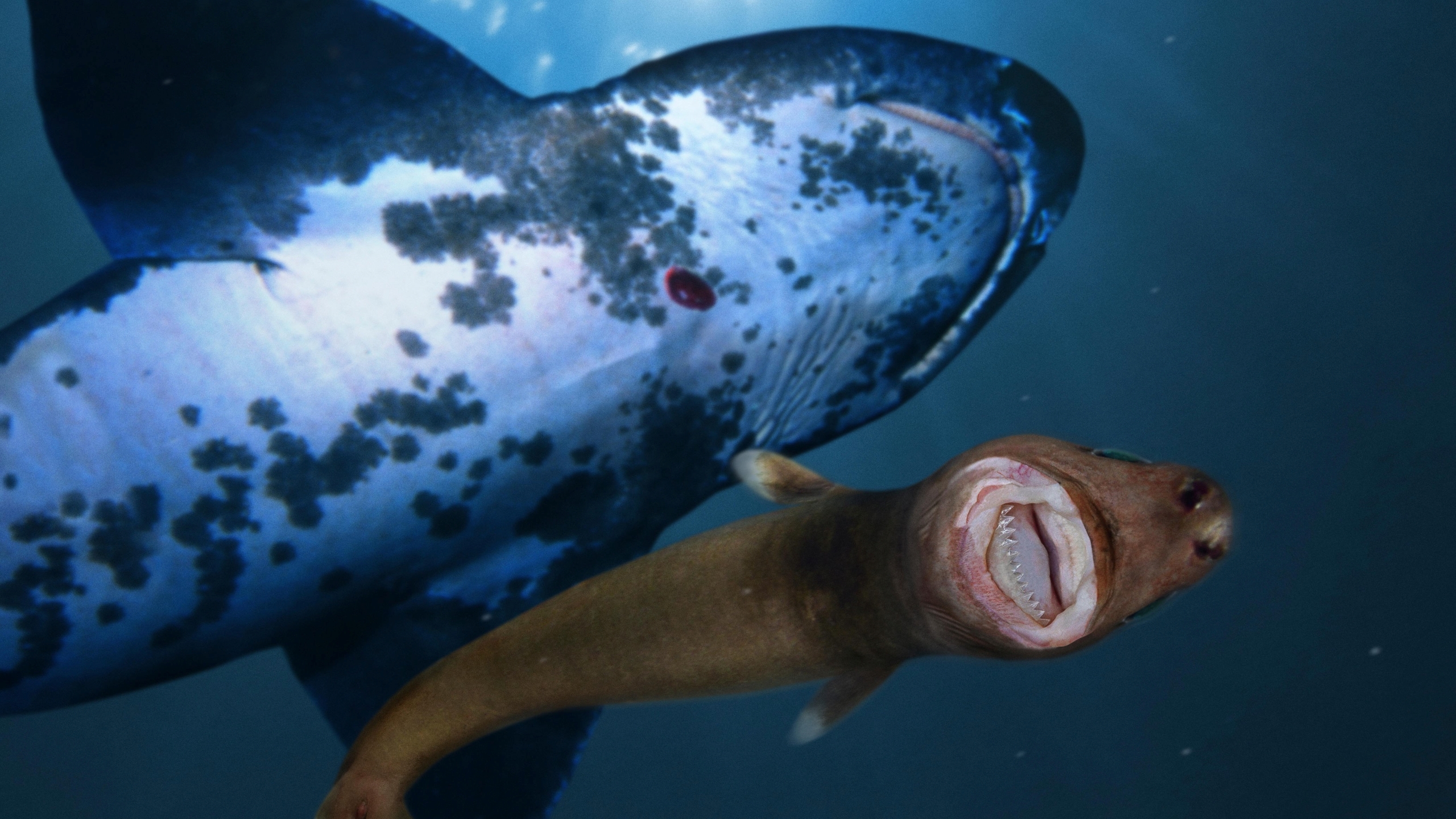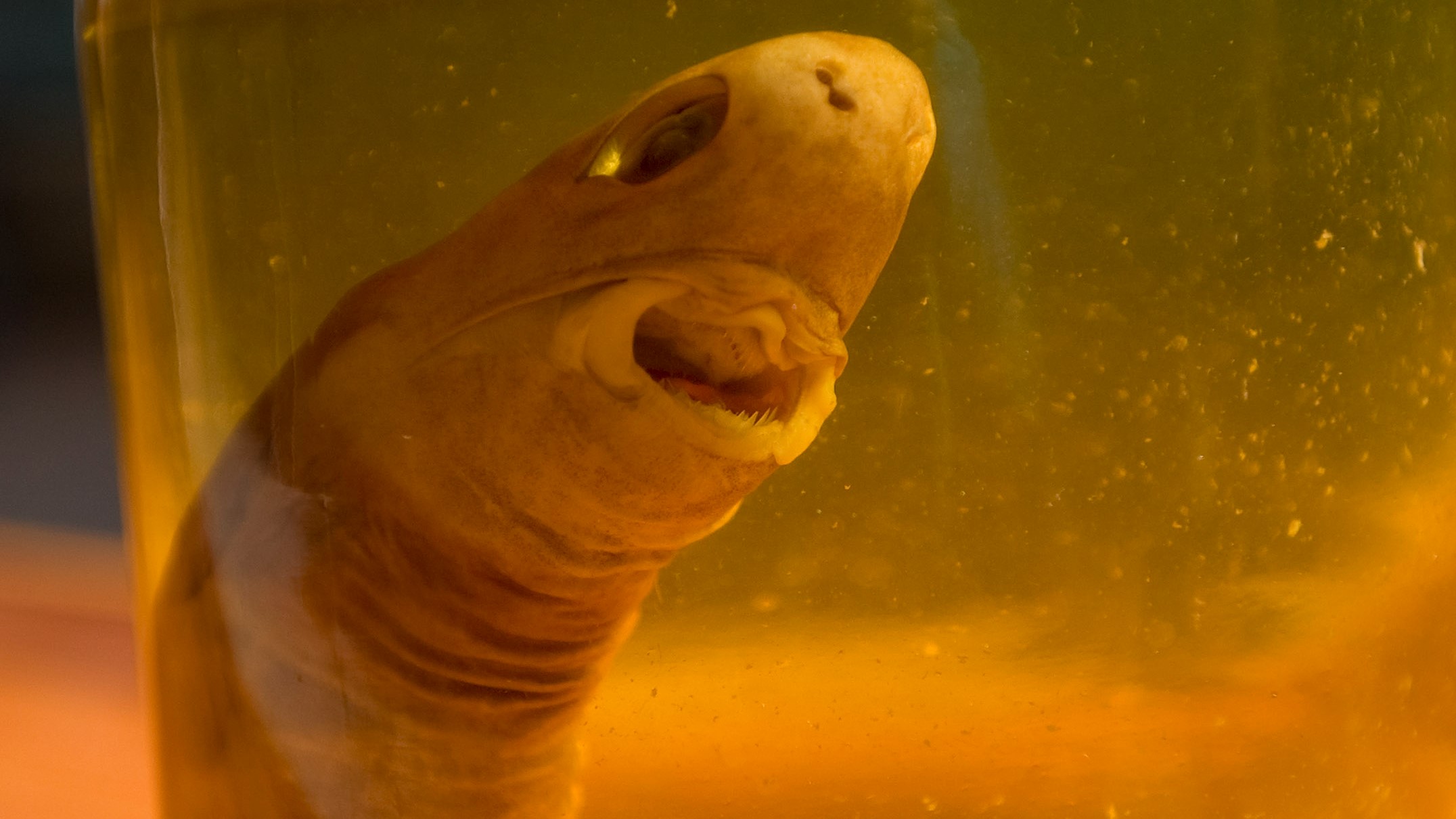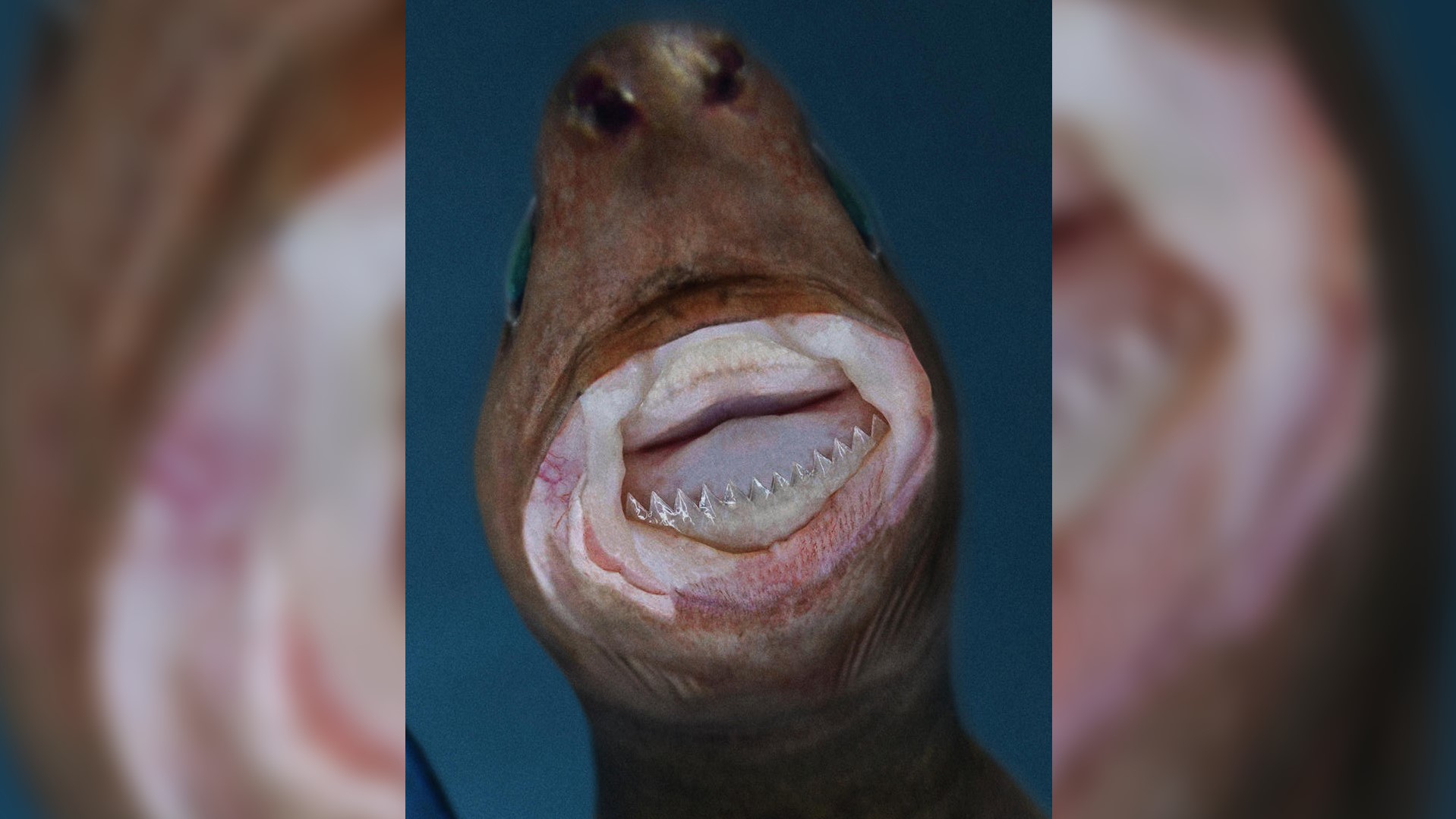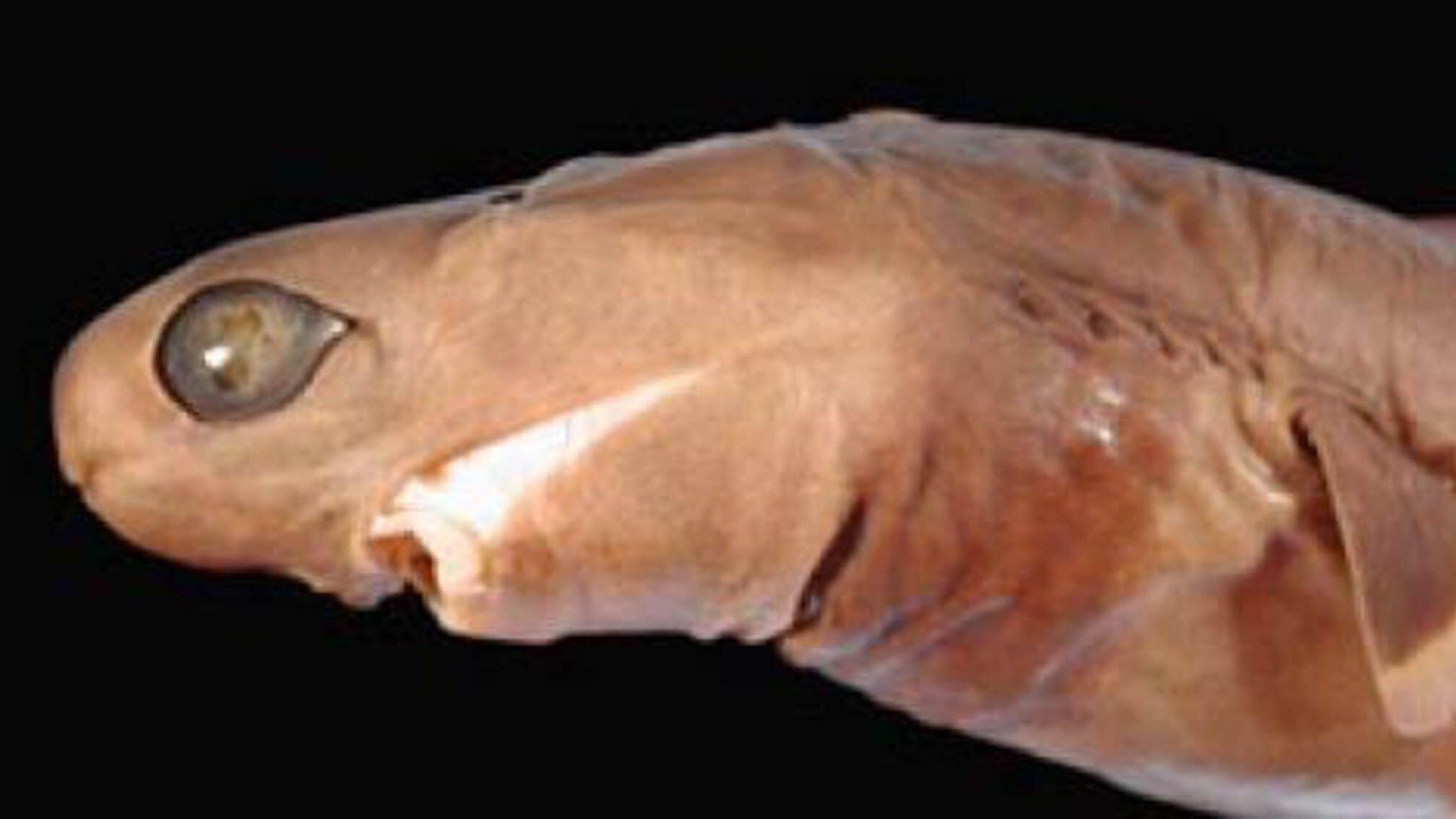Alien-like cookiecutter sharks terrorize animals of all sizes
Cookiecutter sharks attack almost anything.

Cookiecutter sharks are known for ripping small, cookie-shaped chunks out of sharks and whales much larger than themselves, but a new study finds that they actually terrorize animals of all sizes.
The green-eyed, alien-like sharks look like sinister sock puppets made of pastry dough and can grow up to 20 inches (50 centimeters) long. These odd creatures use their pointed teeth to feed off great white sharks 10 times their size and are even known to nibble chunks out of human flesh, Live Science previously reported.
Scientists frequently observed cookiecutter markings on larger animals and thus assumed that's what the sharks primarily ate. But it turns out, these sharks munch on animals at the bottom of the food chain as well, giving them a unique role in the ocean ecosystem, a new analysis of shark specimens finds.
"They feed on everything from the biggest, toughest apex predators — like white sharks, orcas, everything you can imagine — down to the smallest little critters," lead author Aaron Carlisle, an assistant professor in the School of Marine Science and Policy at the University of Delaware, said in a statement. "There's not very many animals that do something quite like this."
Related: 8 weird facts about sharks
Cookiecutter sharks (Isistius brasiliensis) live in tropical and subtropical waters and can inhabit depths of more than 4,920 feet (1,500 meters), according to the study. If humans see cookiecutter sharks, it's usually near the surface at night, when they come up to hunt larger prey in the upper ocean.
The researchers tested the assumption that these sharks mainly eat larger animals in the upper ocean by studying 14 cookiecutter sharks caught around Hawaii by the Monterey Bay Aquarium. The sharks' stomachs were mostly empty of food, but the team figured out what the animals had been eating by looking at the chemical composition of their tissues. The team also checked for environmental DNA (eDNA), or the presence of DNA left behind even when there is no tissue to study.
Sign up for the Live Science daily newsletter now
Get the world’s most fascinating discoveries delivered straight to your inbox.
"Environmental DNA is an increasingly popular and powerful tool that works under the idea that, if an animal swims by in the ocean, it's going to be shedding DNA in the water," Carlisle said. "So if you take a water sample and filter it out, you can extract the DNA of everything that's been in that water mass and identify what species were there. So we tried that on their stomach contents."



The researchers found that the cookiecutter sharks fed mostly on smaller species at lower depths, including crustaceans, squid and small fish, such as members of the genuses Ariomma and Cololabis. Some of these prey may be small enough for the sharks to swallow whole. In contrast, large animals from the upper ocean made up less than 10% of the sharks' diet, the study found.
These findings shed light on the behavior of this cryptic ocean creature. But the sample of sharks was small and from a limited geographic range, so it's unclear whether this feeding trend is the same throughout cookiecutter sharks' global range, according to the study.
The team published the findings June 3 in the journal Scientific Reports.
Originally published on Live Science.

Patrick Pester is the trending news writer at Live Science. His work has appeared on other science websites, such as BBC Science Focus and Scientific American. Patrick retrained as a journalist after spending his early career working in zoos and wildlife conservation. He was awarded the Master's Excellence Scholarship to study at Cardiff University where he completed a master's degree in international journalism. He also has a second master's degree in biodiversity, evolution and conservation in action from Middlesex University London. When he isn't writing news, Patrick investigates the sale of human remains.









